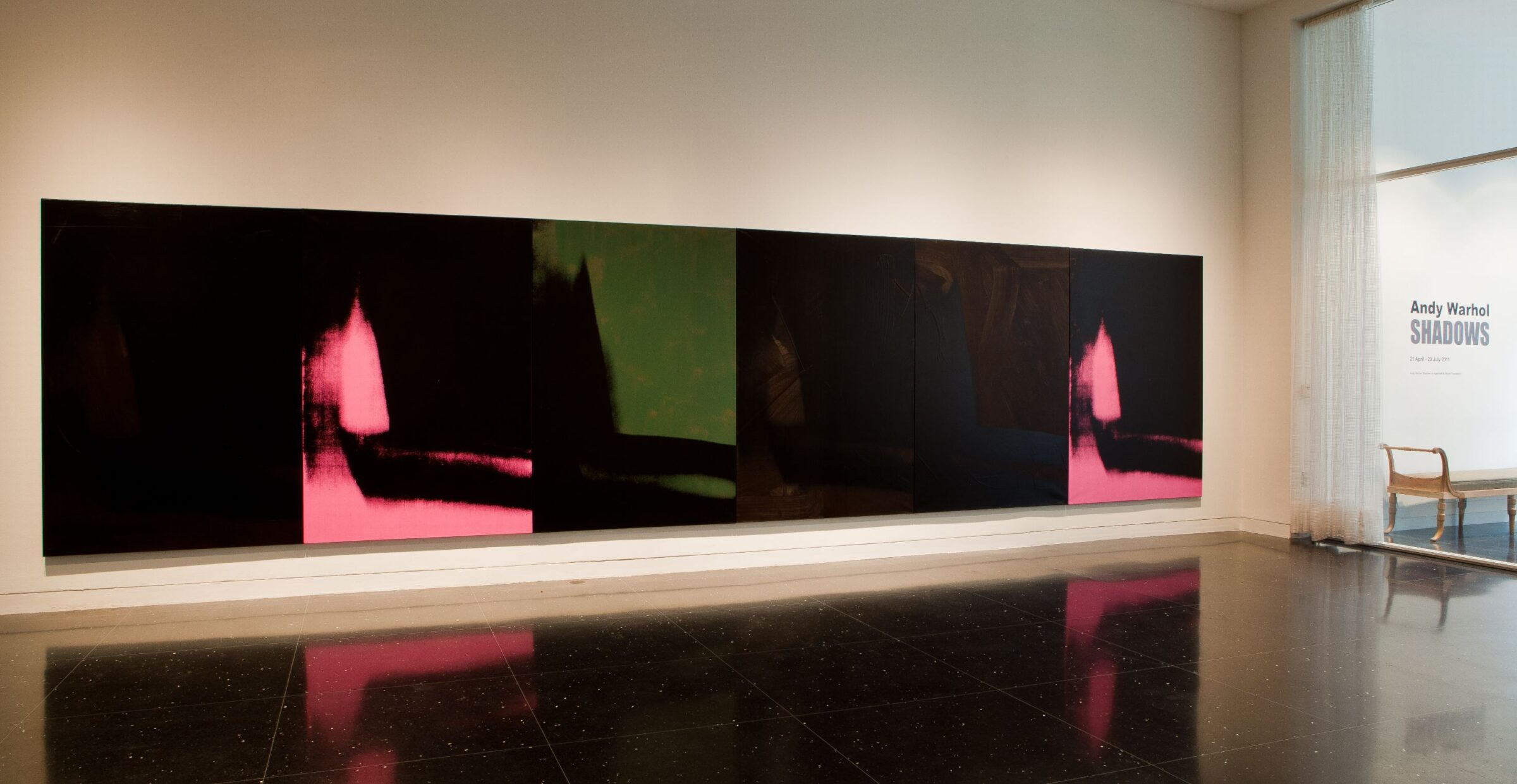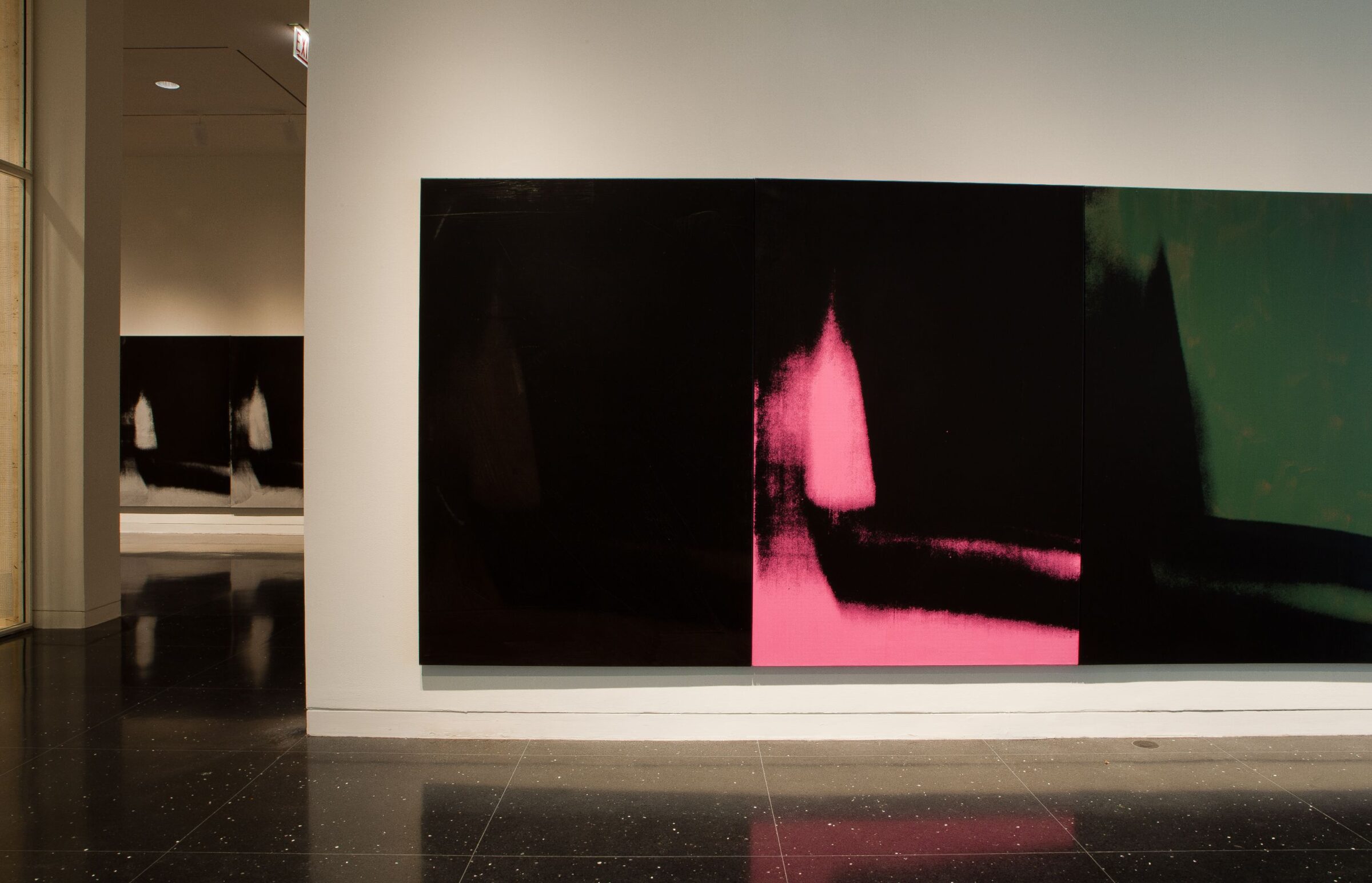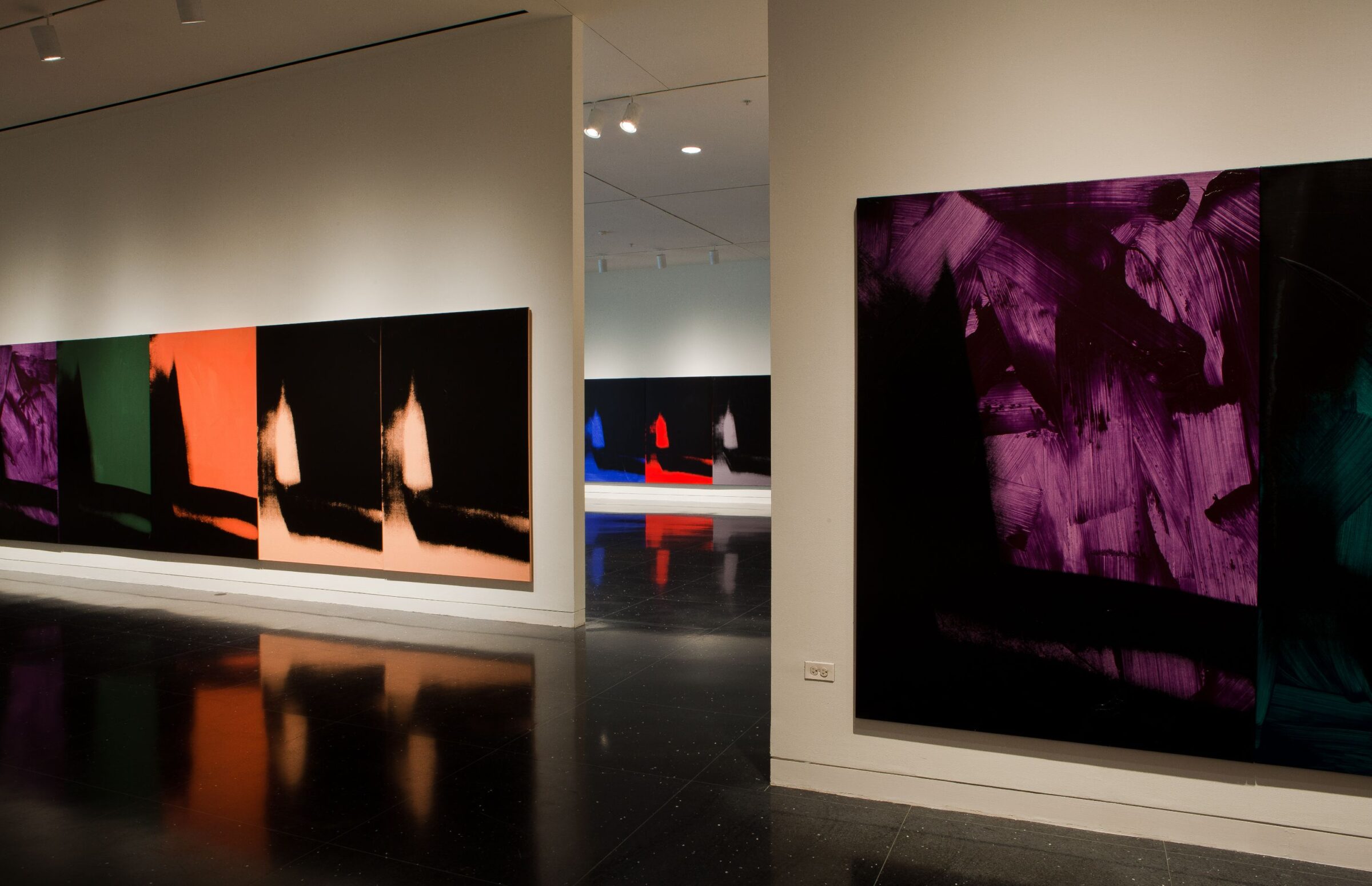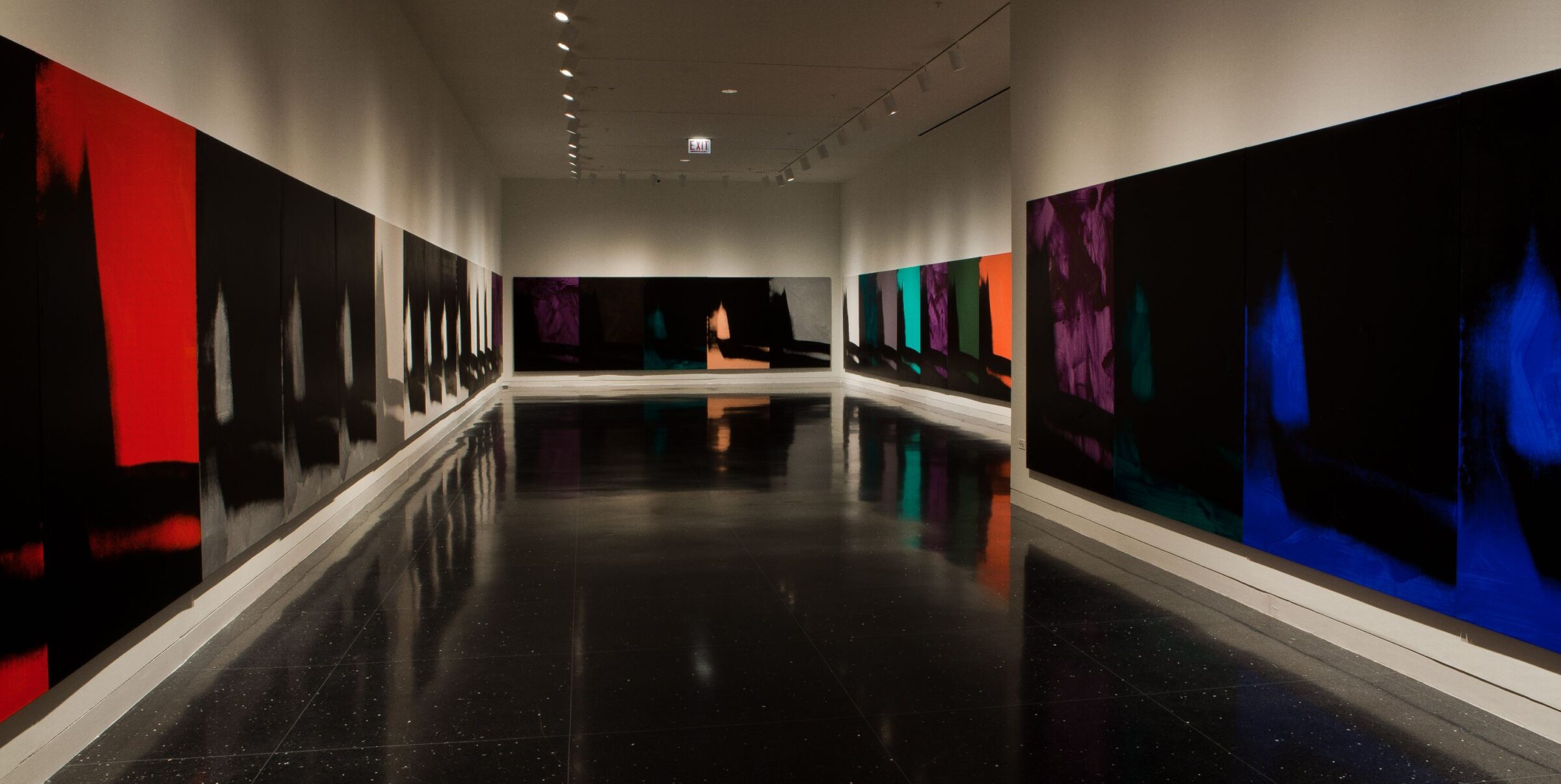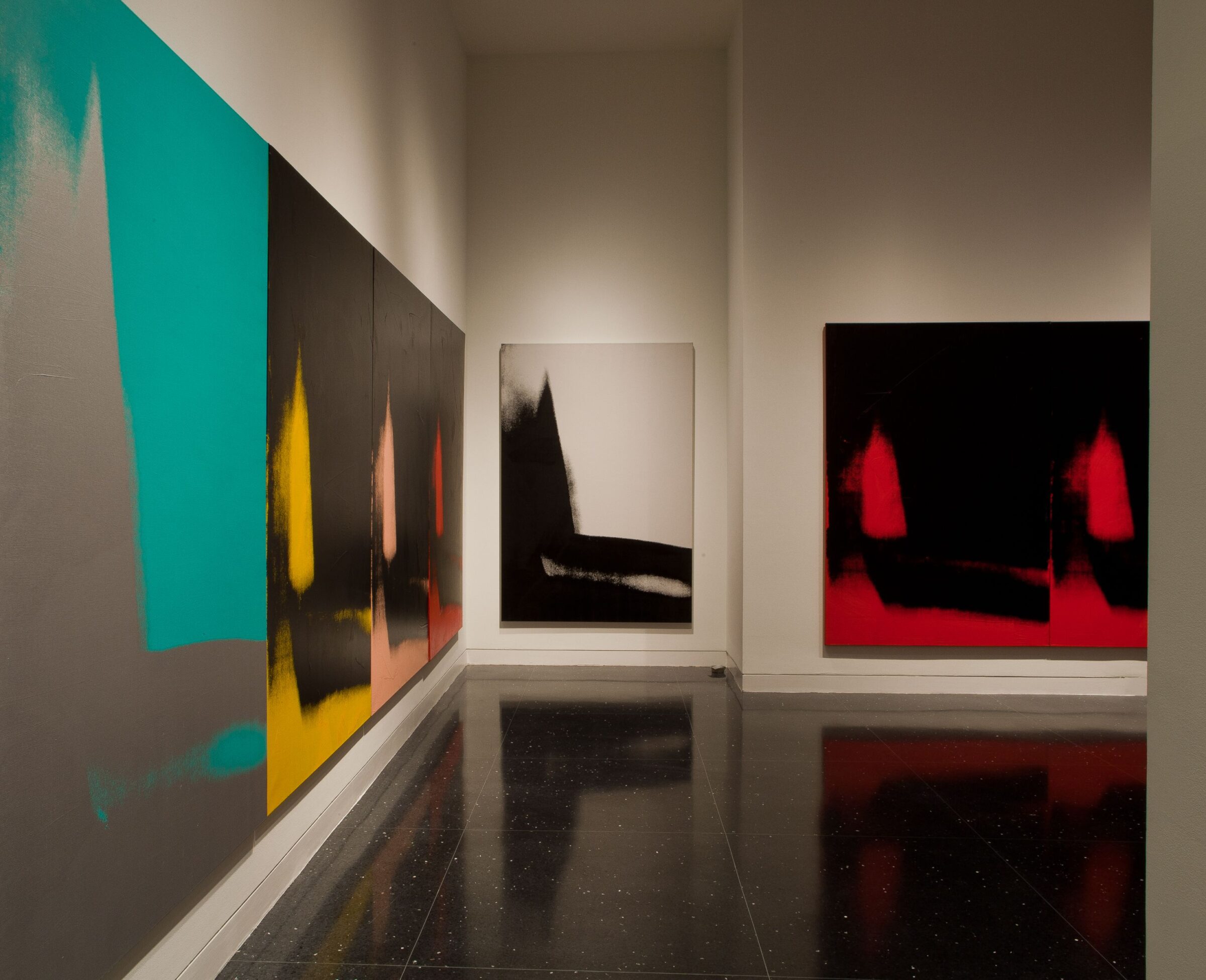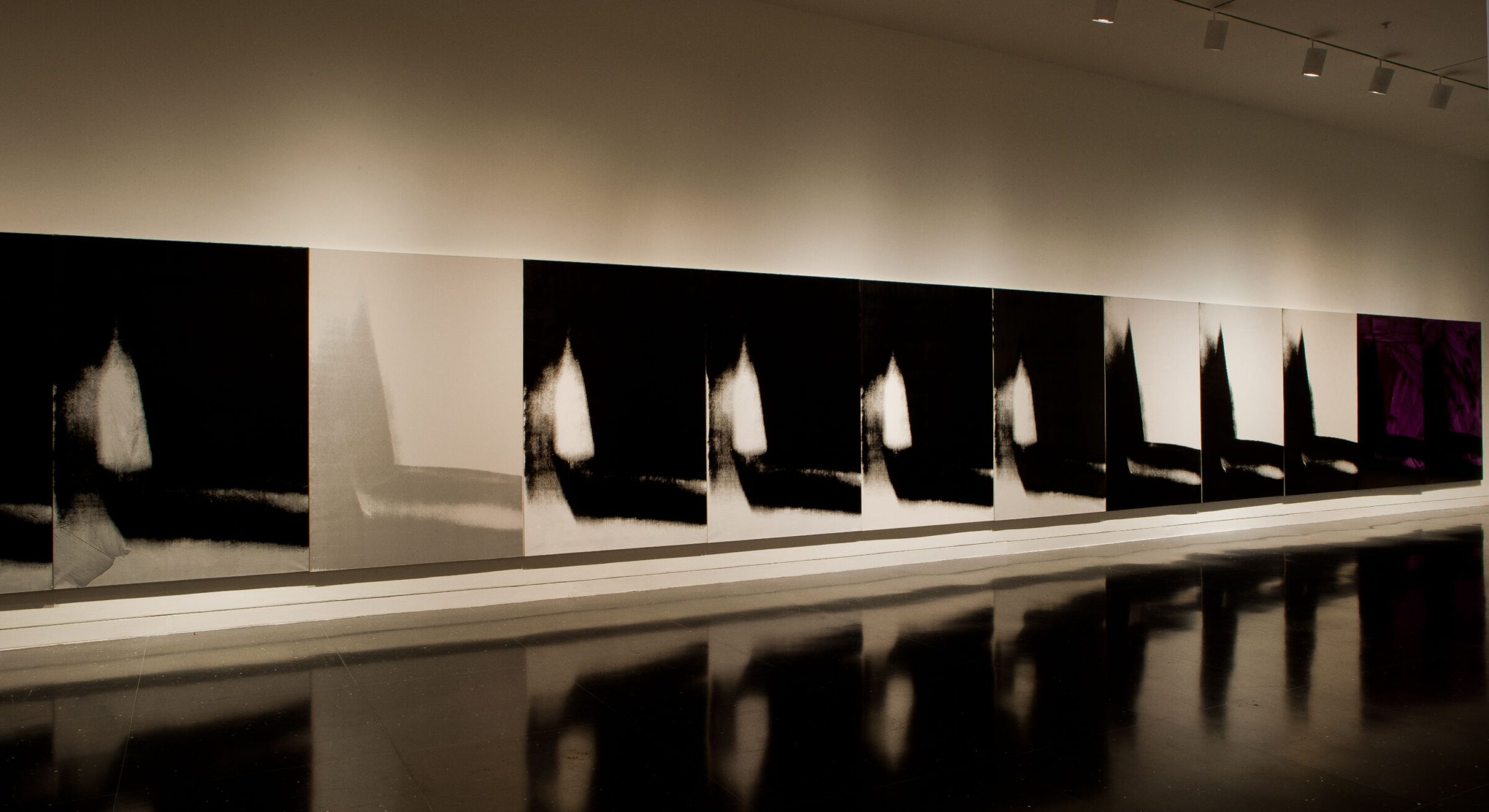Andy WarholShadows
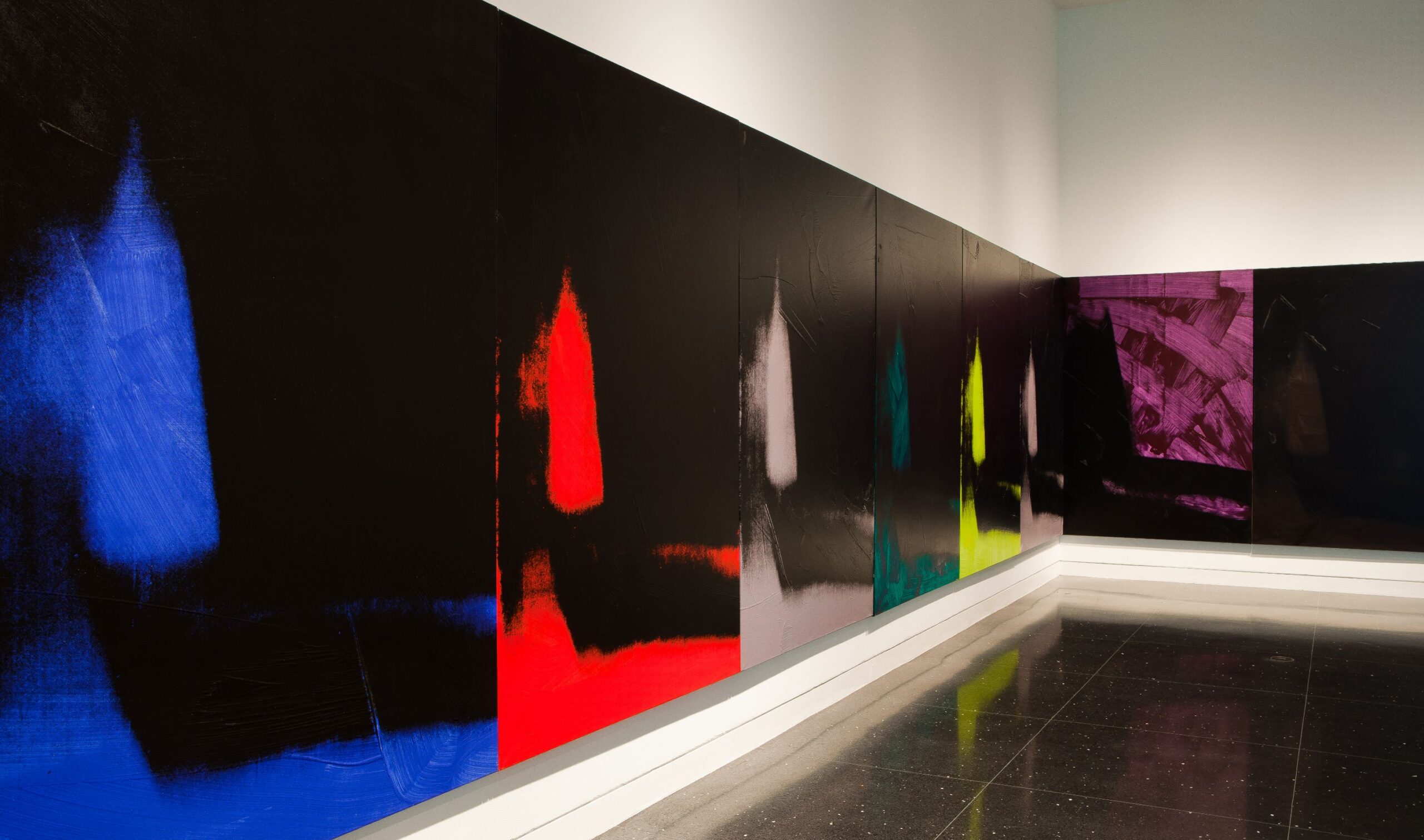
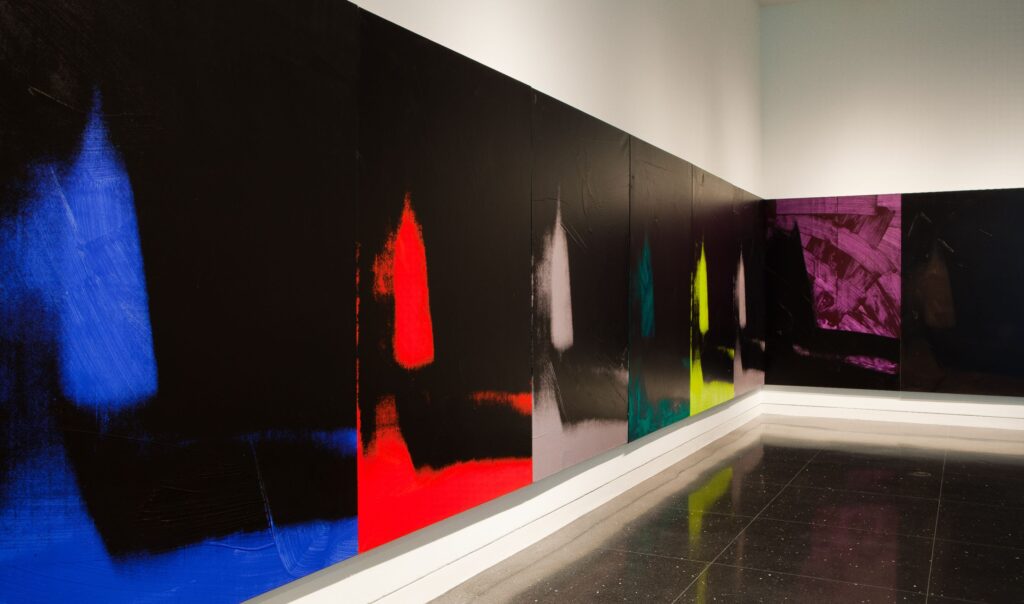
Past exhibition
Andy WarholShadows
About the Exhibition
Opening at The Arts Club of Chicago in April 2011, Andy Warhol: Shadows is the first time a single installation of a large number of the panels from Shadows has been exhibited in Chicago.
Shadows (1978–79) was created contemporary to Warhol’s series of Oxidations, and following his Skulls and Hammer and Sickles, and before the Diamond Dust Shoes. Both the subject-matter and scope of Shadows are unusual for Warhol. The work appears to be “abstract” but is in fact derived from photographs of shadows. Shadows is not a series, but one work in which the number of panels displayed is dictated by the size of the exhibition space. For The Arts Club’s installation, 54 of the 76 x 52-inch panels are on display, abutted and in the order in which they have been displayed at Dia:Beacon.
Shadows was acquired by the Dia Art Foundation from the artist during its inaugural exhibition at the Heiner Friedrich gallery in New York in 1979. It has been on permanent view at Dia:Beacon, Dia Art Foundation’s museum of renowned artworks from the 1960s to the present, located on the banks of the Hudson River in Beacon, New York, since 2003. The entire installation of Shadows (102 panels) is being exhibited at the Hirshhorn Museum and Sculpture Garden in Washington, DC, in the fall of 2011.
Ronnie Cutrone, Warhol’s painting assistant at the time, said of Shadows’ inception:
Andy had a burning desire to do abstract art . . . and I said, “you’re Andy Warhol; you should paint something that is something, but it’s not . . . you should paint shadows. You love shadows anyway. They’re all in your work.” . . . I had 150 shadow photographs on contact sheets twelve days later. We picked some of them out and then he asked me to mix the colors for them.[1]
A selection of photographs from that group were chosen to be silkscreened over the painted backgrounds, the colors of which were chosen from Warhol’s favorites: “aubergine, chartreuse, carmine red, yellow, midnight blue . . . and white.”[2] The impasto texture of some panels was achieved by applying the paint with a mop.
The installation of Shadows was used as a backdrop for a fashion editorial in the April 1979 issue of Warhol’s magazine, Interview. When questioned whether the paintings were art, Warhol self-deprecatingly answered, “No. You see, the opening party had disco. I guess that makes them disco décor.”[3]
Andy Warhol: Shadows is organized by Dia Art Foundation.
[1] Ronnie Cutrone in John O’ Connor and Benjamin Liu, Unseen Warhol (New York: Rizzoli, 1996), as quoted in Larissa Harris, “Andy Warhol: Shadows, 1978 – 79,” lecture at Dia: Beacon (New York, NY), December 18, 2010.
[2] Ibid.
[3] Andy Warhol, “Painter Hangs Own Paintings,” New York 12, no. 6 (February 1979), 9–10, as quoted in Michael Govan et al., eds., “Shadows” in Dia’s Andy: May 2005 – April 2006 (New York: Dia Art Foundation, 2005), 41.
About the Artist
Andy Warhol studied pictorial design at the Carnegie Institute of Technology in Pittsburgh. Following a successful career as a commercial illustrator in New York in the 1950s, he exhibited silkscreened paintings beginning in 1962, eventually becoming both a cultural icon and a major component of the Pop Art movement. He was not only known for his work, but he himself had an immense impact on the contemporary sociocultural milieu, from designing album covers for the band Velvet Underground and founding the magazine Interview, to creating films and overseeing his Factory and its infamous scene. Warhol’s work was exhibited widely throughout the world during his lifetime and after, and both he and his work continue to be a major force in contemporary art and culture.
